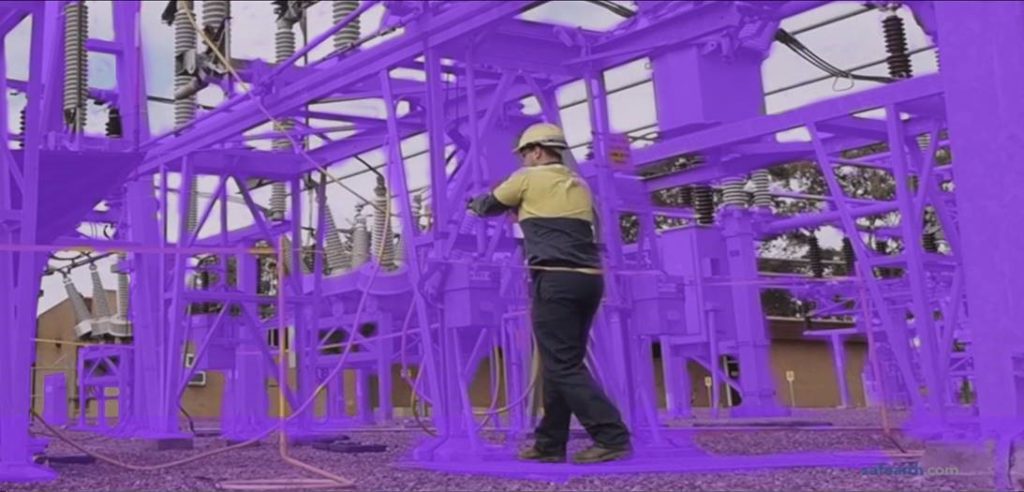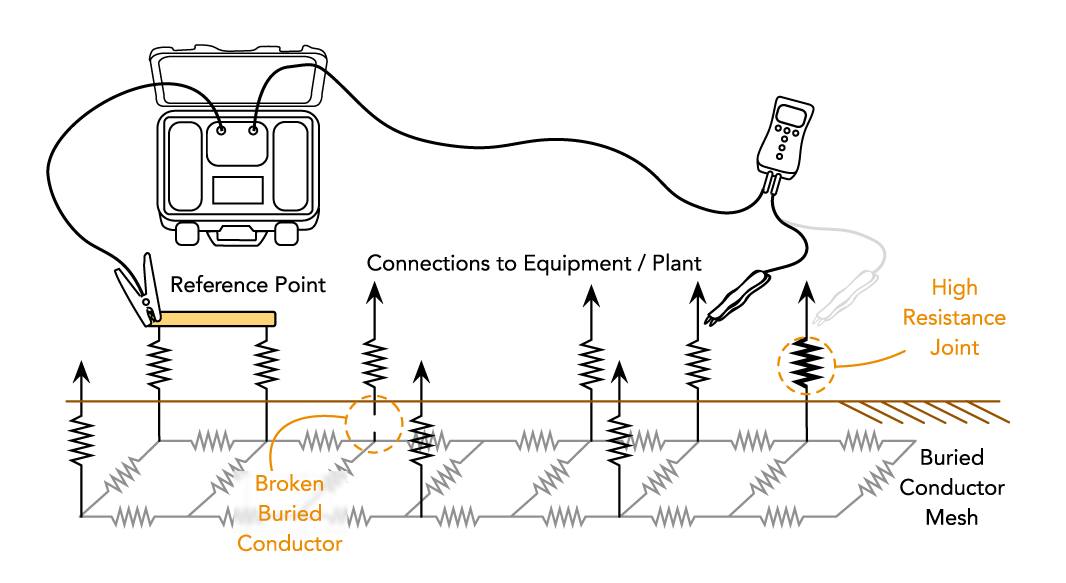Articles
The Benefits of Regular Integrity Testing
Equipotential Bonding for Safety
If every structure in the yard is properly bonded to the ground grid, then it can be relied upon to keep workers in the switchyard safe during normal operation and fault conditions. It then becomes very unlikely that a worker could be exposed to two different voltages. Checking the equipotential bonding, or integrity, of a grounding system is a critical part of commissioning.
The image below shows how a properly functioning grid keeps everything at the same voltage during a fault.

But Grounding Systems Change!
Over the life of a substation ground grid (50 years or more), the range of events and damage mechanisms which can damage the conductors & joints include the following:
- errors or omissions during installation/modification
- theft or vandalism
- corrosion
- mechanical damage
- electrical damage
- configuration changes
- encroachments (buildings, fences etc)
Changes to ‘active’ elements like phase conductors are generally noticed immediately, since their non-operation leads to something not working properly. However, damage to a ground grid element may not show immediately; instead the damage remains undiagnosed until an event occurs that relies on the ground grid. So, like with car brakes and other safety and emergency backup systems, periodic inspection is the only reliable means of finding these latent failures.
Of the various types of grounding tests available, integrity testing is the very best test to identify the changes listed above. Integrity testing (with the right equipment) is fast; a typical utility substation can be tested in as little as 2-3 hours. And test equipment, such as Safearth’s CS3, is inexpensive, with training also readily available.
How Integrity Testing Works
When integrity testing with a CS3, a reference point is selected, and then measurements are taken to the bonded elements. The interconnected mesh of the grid has a low resistance, and so the connection(s) to the element under test is more significant. A series of measurements provides fast insight into the grounding system condition, and allows the tester to quickly identify damaged or missing connections, even if they are below grade. They can even be identified on structures with multiple grounding connections – ask us how!

How Safearth Can Help You
If you want to carry out this testing yourself, please read more about our CS3 and ask us for a proposal.
We can also provide you on-site training, to help your team gain the awareness and skills.
Alternately, if you plan to outsource this testing, Safearth has a team of experienced personnel ready to assist you.
Please feel free to contact us using the form below, or by phone on 1-877-8 GROUND (877-847-6863).
